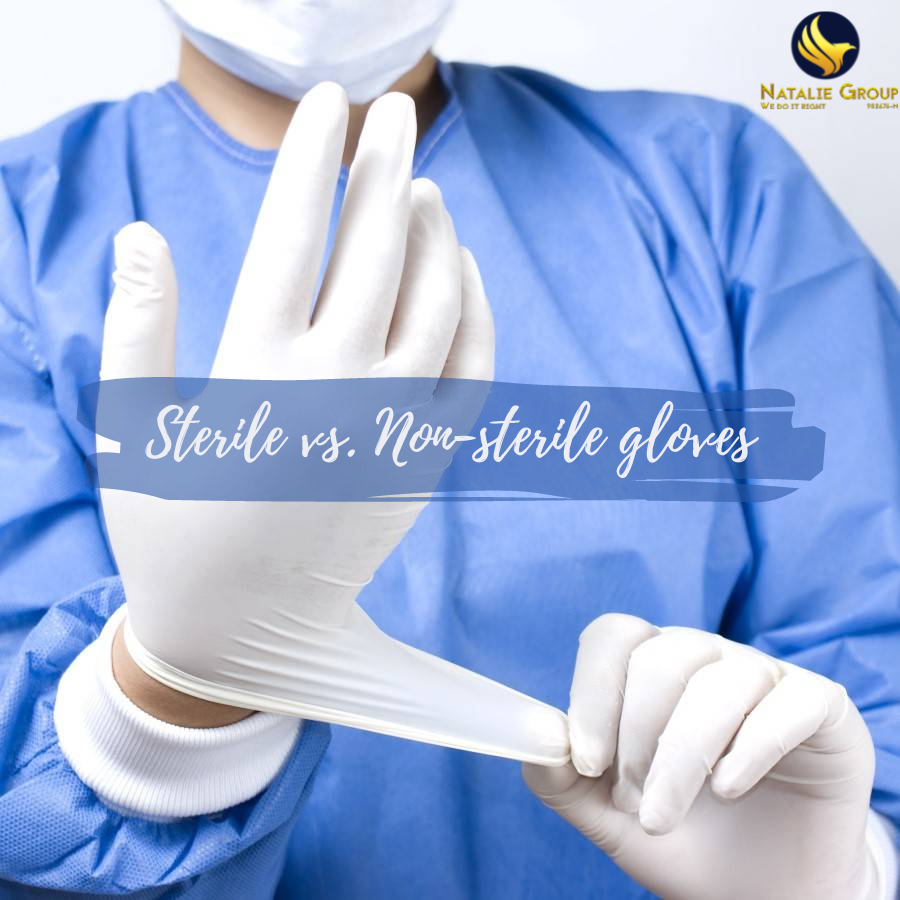When performing medical procedures, selecting the right gloves is crucial to ensure the safety and well-being of patients. There are two main types of gloves available: sterile vs. non-sterile.
Each has its own benefits and drawbacks, and choosing the best one for a particular situation can have a significant impact on patient outcomes.
The Advantages of Sterile Gloves
Sterile gloves are designed to be used in situations where there is a high risk of infection. They are typically made from latex, nitrile, or vinyl, and are individually packaged to maintain their sterility. Sterile gloves are used for surgical procedures, where any contamination could pose a serious risk to the patient.
They are also used for procedures that involve inserting needles or catheters into the body, as well as for handling sterile materials.
One of the main benefits of sterile gloves is that they provide a high level of protection against infection.
Because they are individually packaged and undergo a sterilization process before use, they are free from any bacteria or other contaminants that could cause harm to the patient.
Sterile gloves are also designed to fit snugly on the hand, providing a barrier against any potential sources of infection.
The Drawbacks of Sterile Gloves
However, there are some drawbacks to using sterile gloves. For one, they can be more expensive than non-sterile options, which can make them impractical for routine use.
Additionally, they can be more difficult to put on and take off, which can slow down procedures and increase the risk of contamination.
The Benefits of Non-Sterile Gloves
Non-sterile gloves, on the other hand, are designed for general use. They are typically made from latex, nitrile, or vinyl, and are sold in large quantities.
Non-sterile gloves are used in situations where there is a low risk of infection, such as when performing a physical examination or administering medication. They are also used for tasks that require hand protection, such as cleaning or handling hazardous materials.
One of the main benefits of non-sterile gloves is that they are more affordable and easier to use. They can be quickly put on and taken off, which can save time during procedures.
The Drawbacks of Non-Sterile Gloves
However, they do not provide the same level of protection against infection as sterile gloves.
Because they are not individually packaged or sterilized, they may contain bacteria or other contaminants that could pose a risk to the patient.
Choosing the Right Gloves
When deciding between sterile vs. non-sterile gloves, it’s important to consider the specific needs of your procedure.
If there is a high risk of infection, such as during a surgical procedure or when handling sterile materials, sterile gloves are the best option.
However, if there is a low risk of infection, such as during a routine physical examination or when handling non-hazardous materials, non-sterile gloves may be more appropriate.
It’s also important to consider the comfort and fit of the gloves.
Gloves that are too tight or too loose can be uncomfortable for the wearer,
and can also increase the risk of contamination.
When selecting gloves, choose a size that fits snugly without being too tight,
and look for options that are designed to reduce hand fatigue and increase comfort.
Conclusion
In conclusion, choosing between sterile and non-sterile gloves is an important decision that should be based on the specific needs of your procedure.
While sterile gloves provide a high level of protection against infection, they can be more expensive and difficult to use. Non-sterile gloves are more affordable and easier to use, but do not provide the same level of protection. By considering the risks and benefits of each option, you can make an informed decision that will help ensure the safety and well-being of your patients.
Contact us to learn more about our sterile and non-sterile gloves.


